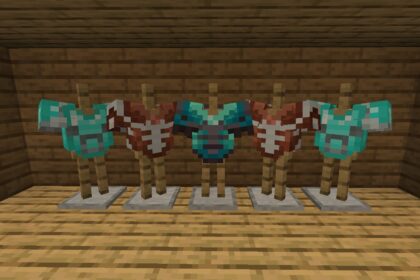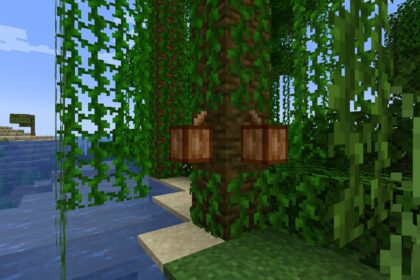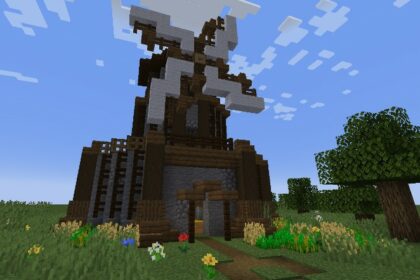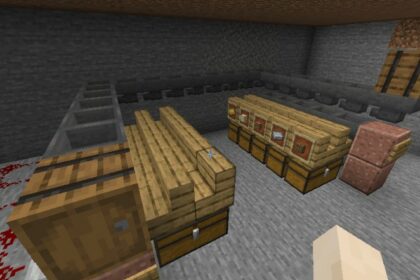Minecraft’s farming is pretty contentful. The game relies on various farm tools and structures to enable certain activities. Composters are an essential part of the game’s farming mechanics.
Having a composter in Minecraft can speed up most plantations; it can also prevent junk from polluting your farm area and storage containers.
Although this block is pretty straightforward to craft, it requires a bit of knowledge for the player to benefit from it. Composters can work pretty efficiently given the ideal conditions.
So let’s discuss how to use a composter in Minecraft a bit more in-depth and share some tips on it.
Minecraft Composter Recipe
- 7 Wooden Slabs (any)
In Minecraft, the composter is a block that turns specific biological items and materials into bone meal. This block is very present in villages’ farming sites, specifically adjacent to plantations.
Composters naturally appear in villages. However, you can craft this block with seven slabs of any wood type by arranging the slabs in a “U” shape in a crafting panel. See below.

If you spot one in a village, you can get it to your inventory by using any tool or the player’s bare hands. If the composter has materials inside and you break it, it will become empty. Disassembling the composter is faster with an axe.
Function
A composter in Minecraft provides a type of in-game fertilizer known as “bone meal”. This resource enhances most crops’ growth considerably.

The block works by recycling organic matter such as food, plant products, flesh, etc. However, you won’t be able to recycle some products such as bamboo, poisonous potatoes, dead bushes, meat, and fish with the composter.
Each organic product that you add to the composter fills its storage.
The block resembles a cauldron; it gradually fills until it becomes full of compost. At this point, every other compostable item you add will result in a dropped bone meal.
When adding compostable items to the composter, you’ll know that the composting process works if a green particle appears. The composter fills up to seven layers in total; after reaching the 7th layer, the compost’s appearance will alter, resembling bone meal.
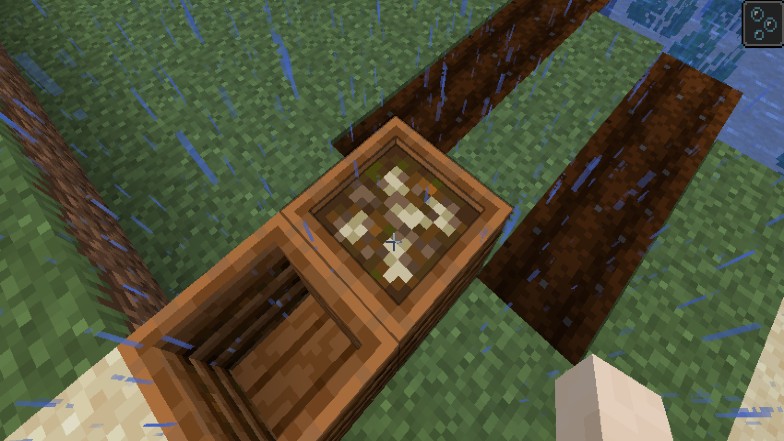
After acquiring the bone meal, you’ll be able to use it on plantation sites, where it will mix with the dirt, strengthening its principles. Look directly at the crop you want to fertilize with the bone meal in hand and right-click with the mouse.
Creating Compost
The composting process depends on the compostable items you’ll add to the composter. You’ll notice that different objects will provide distinct results after the recycling process.
There are highly efficient compostable items, reasonable ones, and less-efficient ones. Each will add a percentage to complete a compost layer, with the minimum being 30% and the maximum 100% per item. Let’s see only a few of them:
- 30% Compost: Seeds, Grass, Leaves, Moss, Roots, Dried Kelp, Saplings, Kelp, and Berries.
- 50% Compost: Dried Kelp Block, Cactus, Vines, Tall Grass, Melon Slice, Nether Sprouts, Sugar Cane, Lichen, Azalea Leaves.
- 65% Compost: Apple, Azalea, Pumpkins, Fungus, Melon, Moss Block, Lily Pad, Flowers, Carrot, Cocoa Beans, Beetroot, Dripleaf, Potato, Nether Wart, Sea Pickle, Shroomlight, etc.
- 85% Compost: Baked Potato, Bread, Cookie, Flowering Azalea, Hay Bale, Mushroom Blocks, Nether Wart Blocks, and Warped Wart Blocks.
- 100% Compost: Cake and Pumpkin.

Alternative Uses for Composters
Surprisingly, you can use composters in a few different ways other than to create fertilizer.
Villager Jobs
In Minecraft, developing a village consists of assigning professions to unemployed villagers. For example, you can create librarians by placing a lectern close to an unemployed villager. Consequently, they’ll take the job and start selling books and maps.
To create any other profession, you’ll need to do a similar method. For example, for blacksmiths, use an anvil; for cartographers, use a cartography table; for farmers, use a composter, etc.

Hence, composters are fundamental to the growth of a village by assigning farmers to work. The village will begin showing crops and even animals as soon as a farmer starts to work.
Redstone Enhancement
Although a seemingly rudimentary tool for farming, composters can fill a vital role in complex Redstone mechanisms.
A composter can behave as a power source for Redstone comparators.
There will be a signal output if the comparator has a composter behind it, either adjacent or with a single block separating them. The signal strength coming from the comparator will be between 0 and 8, depending on how full the composter is.
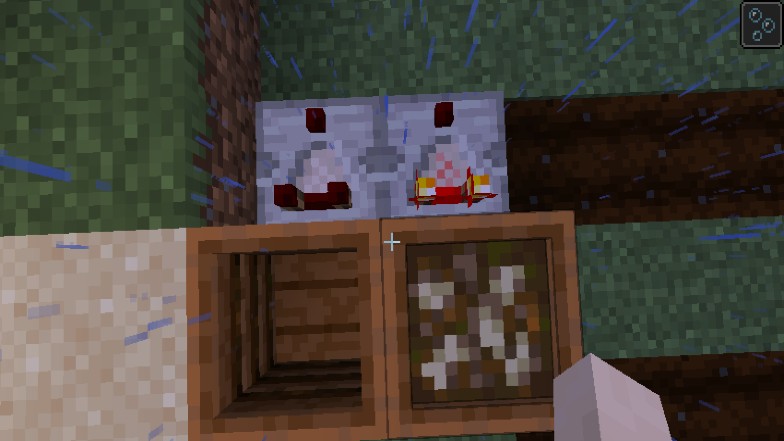
In this sense, the comparator will provide 0 signal output if empty, 1 for 1/7 full, 2 for 2/7 full, 3 for 3/7 full, and so on until the final composter’s fullness, which is when the bone meal is ready to collect.
Beware that, although the composter and the comparator can interact a single block apart, their interaction won’t be immediate. Instead, you’ll probably have to wait a few seconds to see the signal output.
Hopper Mechanism
You can interact a composter with a hopper to enhance bone meal production.
Hoppers are valuable blocks that facilitate mechanisms and item sorting structures. Using a similar principle to that of an item sorter, you can use hoppers to fasten and even automate the production of bone meal through composters.

When a hopper is directly below a composter, it will automatically pull bone meals from it. Additionally, when a hopper or dropper stands facing downwards above a composter, it will push items inside it.
In this sense, you can assign the hopper above to an automated chest system that will constantly refuel the block with compostable items. Consequently, all the bone meal will be stored through the hopper below the compost if you assign a chest to it too.
Fuel
Since composters require wood in their build, you’ll be able to add them into furnaces as fuel.
Composters are generally a lousy fuel source; using one will smelt up to 1.5 items. In comparison, a piece of coal can smelt up to eight items.
Bass Instruments
You can use composters to achieve low-end hits by placing them under note blocks. Then, playing the block will result in bassy sounds.

